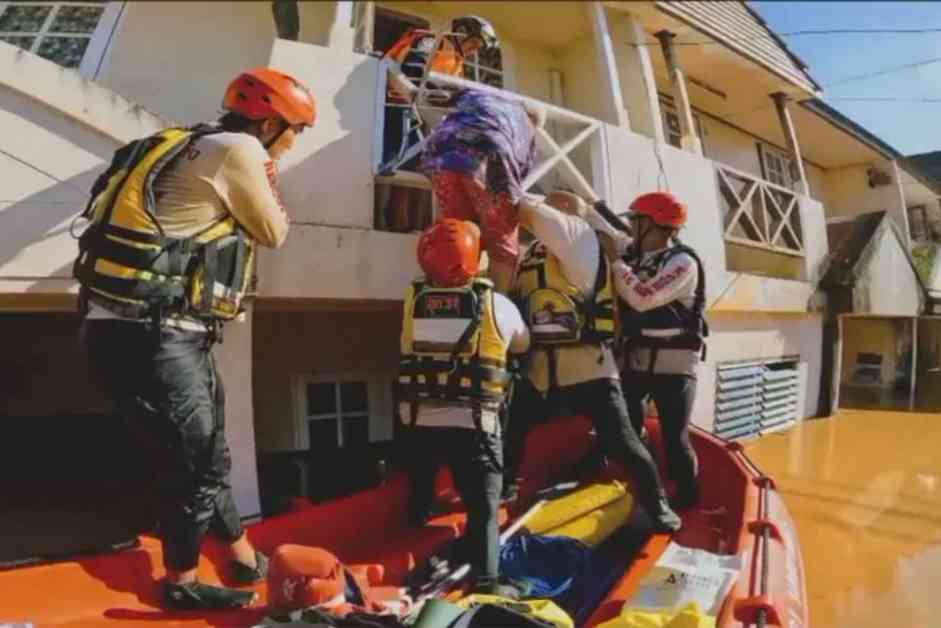Evacuation efforts are currently underway to rescue individuals stranded in Muang and Saraphi districts of Chiang Mai due to severe flooding caused by the overflowing Ping River. The situation became critical late Saturday night when the Ping River at Nawarat Bridge reached a record high level of 5.30 meters. Although the water level slightly decreased to 5.15 meters by 4 am and 5.00 meters by 8 am on Sunday, the damage had already been done.
The flooding not only affected residential areas but also commercial districts such as the Night Bazaar, Chang Khlan Road, and Kad Luang market. Thousands of individuals, including elderly residents and children who were unable to evacuate on their own, were in urgent need of rescue and basic necessities like food and shelter.
Chang Khlan Road and the Night Bazaar were submerged under more than a meter of water, leaving both locals and tourists stranded. Additionally, the Chiang Mai-Lampang superhighway and Chiang Mai-Lamphun Road were also flooded, with many vehicles stranded at Saraphi interchange. Motorists found themselves isolated and in need of assistance.
Furthermore, the heavy flooding in Chiang Mai has impacted transportation services, with the State Railway of Thailand announcing the termination of its north-bound train service from Bangkok in Lampang province. As a result, travelers are advised to seek alternative routes or means of transportation until the situation improves.
Chiang Mai is not the only province facing flooding issues, as the Department of Disaster Prevention and Mitigation reported that 20 provinces across Thailand were experiencing similar challenges on Sunday. The widespread flooding highlights the urgent need for coordinated rescue efforts, emergency supplies, and long-term solutions to mitigate the impact of natural disasters on vulnerable communities.
As the rescue operations continue and the floodwaters subside, local authorities and relief organizations are working tirelessly to ensure the safety and well-being of those affected by the disaster. The aftermath of the flooding will require not only immediate assistance but also long-term recovery plans to help communities rebuild and recover from the devastation caused by the natural disaster.



















